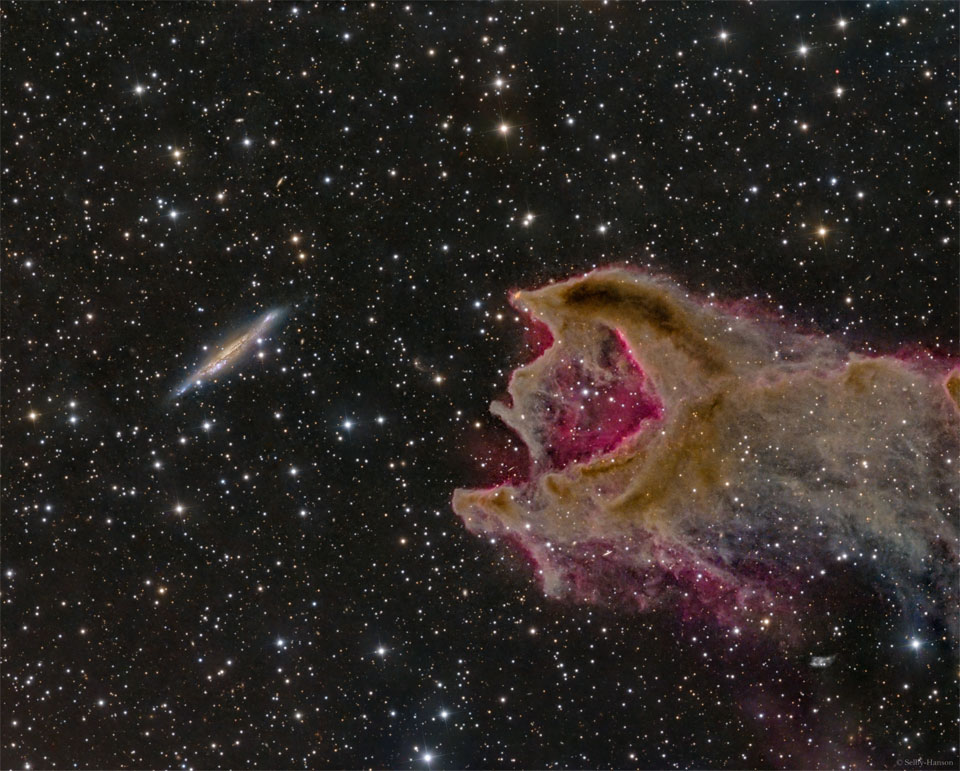2023年1月4日
CG4: The Globule and the Galaxy
Image Credit & Copyright: Mike Selby & Mark Hanson
Explanation: Can a gas cloud eat a galaxy? It’s not even close. The “claw” of this odd looking “creature” in the featured photo is a gas cloud known as a cometary globule. This globule, however, has ruptured. Cometary globules are typically characterized by dusty heads and elongated tails. These features cause cometary globules to have visual similarities to comets, but in reality they are very much different. Globules are frequently the birthplaces of stars, and many show very young stars in their heads. The reason for the rupture in the head of this object is not yet known. The galaxy to the left of the globule is huge, very far in the distance, and only placed near CG4 by chance superposition.
Discovery + Outreach: Graduate student research position open for APOD
Tomorrow’s picture: open space
CG4: 云球与星系
图像提供与版权: Mike Selby & Mark Hanson
说明: 这大团云气能吞下整个星系吗?当然不行!在这幅主题图像里看似在伸展“触手”的怪异“生物”,是一种名为彗星状云球的云气团。然而,这团云气已然破裂。彗星状云球典型的特征为尘埃头和长尾,这让彗星状云球的外观和彗星有点相似,然而在本质上它们天差地别。云球经常是恒星诞生之所在,有些云球的头部甚至镶着很年轻的恒星。至于这团云球的头部为何会破裂,其成因仍不明。云球左方的星系,其实非常庞大且遥远,它只是和CG4恰好在同视线方向而已。
探索+拓展: APOD研究生研究职位空缺
明日的图片: open space



